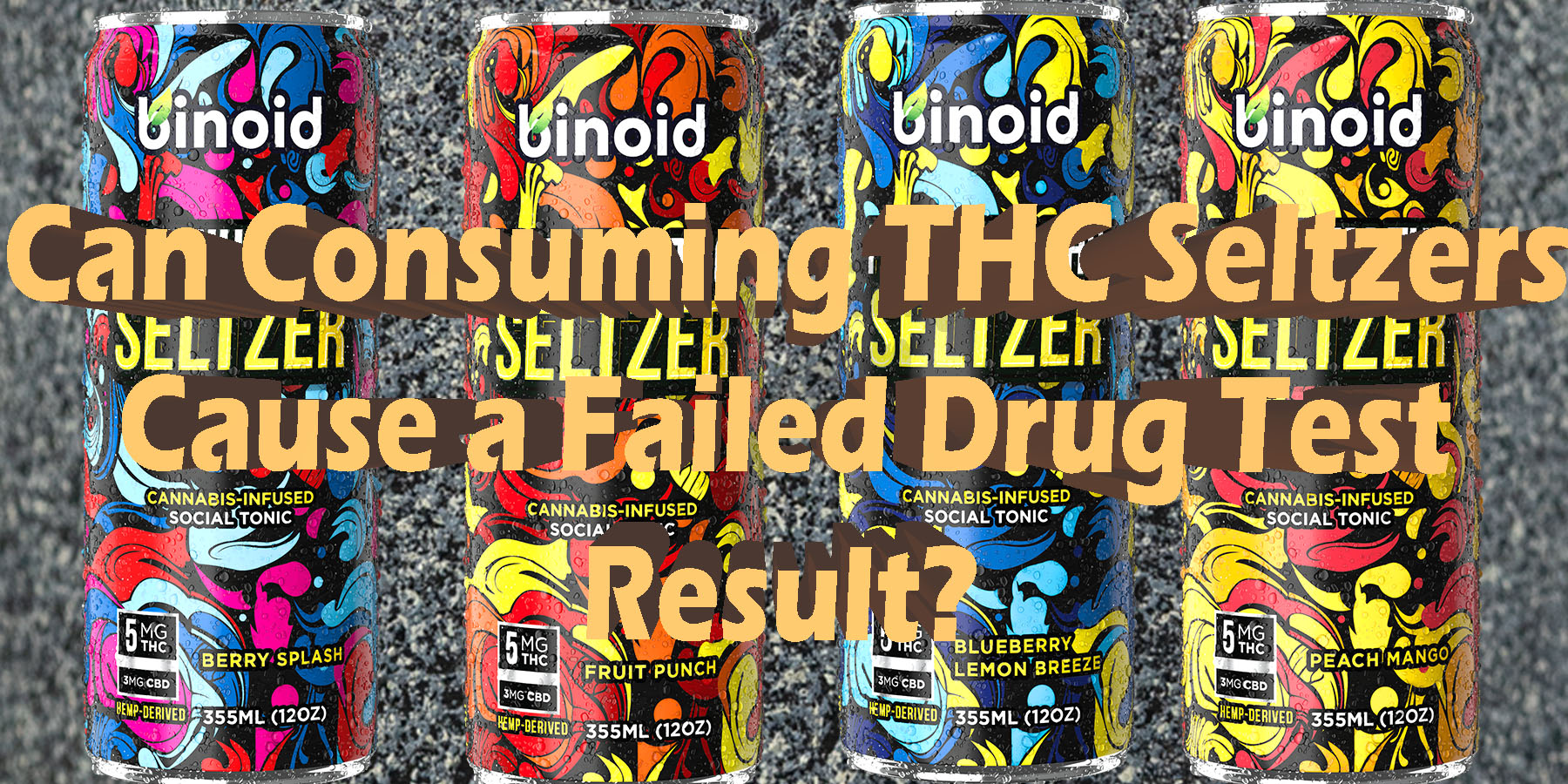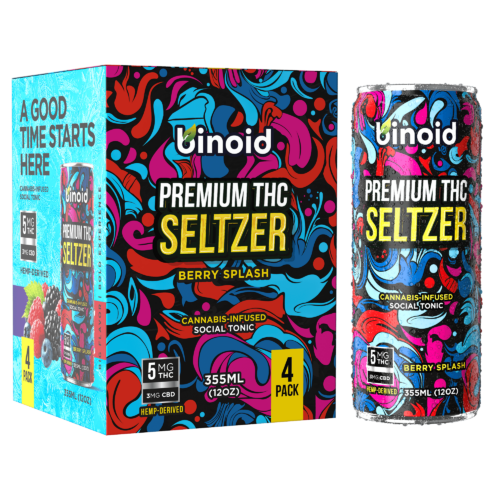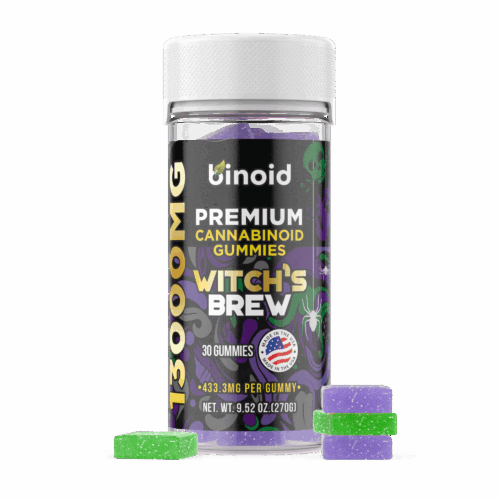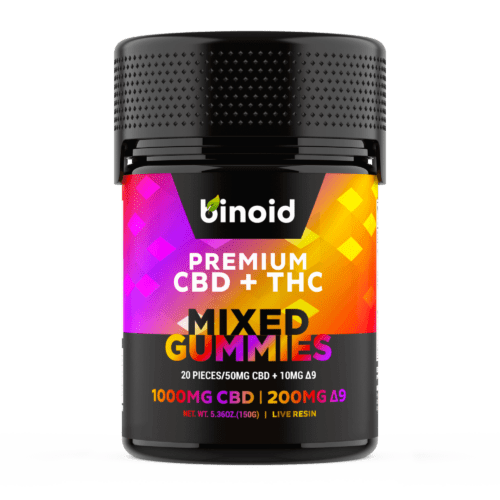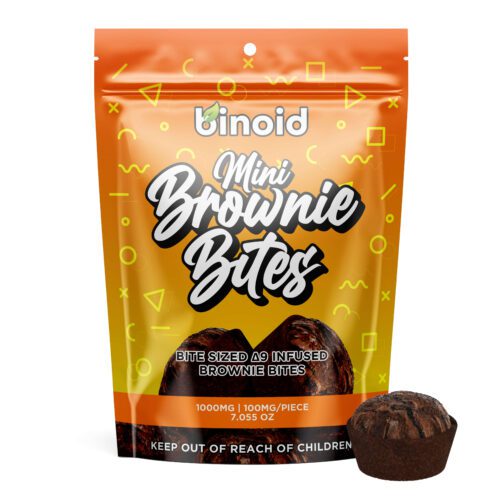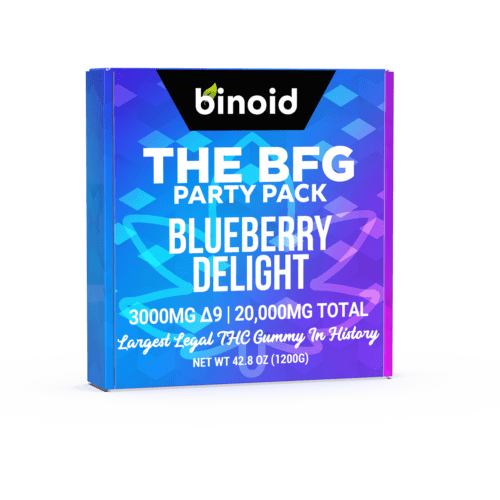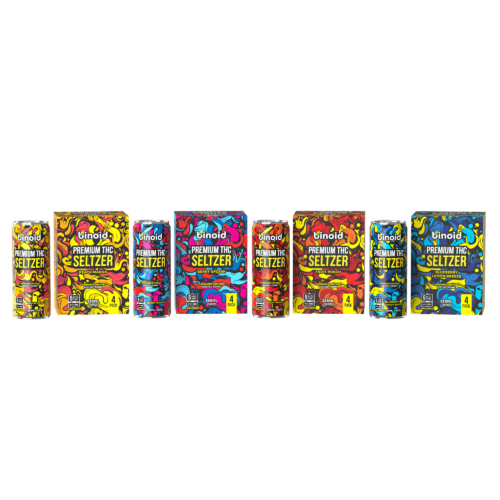There’s a satisfying hiss as you crack open a chilled can, frost condensing on your fingertips in perfect anticipation of the first refreshing sip. In today’s ever-expanding world of cannabis, that can of seltzer might hold something more than just flavored bubbles; it could be your ticket to a state of blissful relaxation. THC-infused seltzers have gracefully stepped into the spotlight, quickly becoming a favorite for unwinding after a long week or mingling at a social gathering.
Yet, as you browse the gleaming dispensary coolers filled with vibrant cans, a practical and critical question can get lost amidst the excitement. For many people, the consequences of a mandatory drug test for employment or other reasons are a serious reality. You start to wonder if enjoying this modern, sociable way to consume cannabis could have unforeseen professional or personal repercussions. It sparks a crucial internal dialogue between the desire for a relaxed evening and the non-negotiable need to maintain a clean record.
Navigating this landscape requires more than just an appreciation for flavor; it demands a clear understanding of how these seltzers interact with your body and the tests designed to screen for them. Knowing the facts is the only way to make a truly informed decision, ensuring your moments of euphoria don’t lead to future complications.
To Buy THC Seltzers Click Here
Recommended products
What Exactly are THC Seltzers Anyways?
THC seltzers are essentially sparkling water beverages that have been infused with a measured amount of Tetrahydrocannabinol (THC) – the compound in cannabis primarily responsible for its psychoactive effects. These drinks come pre-made and packaged in cans, offering a convenient and discreet way to consume THC. At its core, THC interacts with the body’s endocannabinoid system (ECS). The ECS is a vast network of receptors that helps regulate functions like mood, sensation, and perception.
When you drink a THC seltzer, the Tetrahydrocannabinol is absorbed through your digestive system, which means the onset of effects is more gradual than with inhalation. This controlled and predictable dosing, clearly labeled on each can, is a significant part of the appeal, allowing individuals to tailor their experience with a degree of precision that is difficult to achieve with other forms of cannabis.
The effects of THC seltzers are often described as a gentle, uplifting wave that brings on a state of relaxation and mild euphoria. Unlike the sometimes-intense rush that can come from other methods, the experience with seltzers tends to build slowly, typically taking anywhere from 30 to 90 minutes to fully manifest. This slower, more manageable onset provides a sense of control, allowing users to ease into a chilled-out state of mind. Many people report feeling more present and engaged, with a heightened appreciation for their surroundings—music may sound richer, food may taste more flavorful, and conversations may feel more connected.
The goal for many is not an overwhelming high, but a subtle enhancement of reality, fostering a lighthearted and blissful disposition perfect for a variety of settings. The audience for THC seltzers is broad and continues to grow, encompassing a wide range of adults looking for alternatives in their recreational beverage choices. They are particularly popular among those who are “canna-curious” but may be hesitant to smoke or vape, as the familiar format of a seltzer is far less intimidating.
Health-conscious consumers are also drawn to them, appreciating that they are often low in calories and sugar, providing a way to unwind without the negative attributes commonly associated with alcohol. From the social butterfly seeking a way to stay engaged at a party to the individual looking for a peaceful companion during a creative endeavor or a quiet night at home, THC seltzers offer a versatile and modern option for adult enjoyment.
Recommended products
The Core Question: Why THC Seltzers Trigger a Positive Test
To put it directly: yes, consuming THC seltzers can absolutely cause you to fail a drug test. The reason is simple and has nothing to do with the form in which you consume cannabis. Whether you smoke it, eat it in a gummy, or drink it in a seltzer, your body processes the active compound—Tetrahydrocannabinol (THC)—in the same fundamental way. The core of the issue lies not with THC itself, but with what your body turns it into after you’ve enjoyed that chilled-out feeling.
When THC enters your bloodstream, it travels to the liver, where it is metabolized. This process breaks the THC down into several byproducts, which are called metabolites. The most important of these for drug testing purposes is a specific, non-psychoactive metabolite called “11-nor-9-carboxy-THC”, more commonly known as THC-COOH.
Standard drug tests, particularly the common urine screen used by most employers, are not designed to detect the active, euphoric THC compound. Instead, they are specifically calibrated to search for the presence of THC-COOH. The logic is that THC-COOH is an undeniable marker of cannabis consumption that lingers in the body for a much, much longer time than the parent THC molecule. Unlike alcohol, which is water-soluble and is flushed from the body relatively quickly, THC and its metabolites are fat-soluble. This means they are stored in the body’s adipose (fat) tissues and are released slowly over time through urine and feces. This fat-solubility is the primary reason why cannabis from any source, including seltzers, can be detected for days, weeks, or even more than a month after your last sip.
Recommended products
Factors That Influence Detection Times
Determining how long THC from a cannabis seltzer will remain detectable in your system isn’t a simple calculation; it’s a deeply personal equation with multiple moving parts. There is no magic number or universal timeline. Instead, the detection window is a unique blueprint shaped by your own body, your habits, and the specifics of what you consume. Think of it less like a stopwatch with a fixed time and more like a complex weather forecast, where several distinct conditions converge to create the final outcome. Understanding these individual factors is the only way to move from a vague sense of uncertainty to a clear-eyed appreciation of the situation.
Factor #1: Frequency and Volume of Consumption
This is the most critical variable in the entire equation. The body’s storage of THC-COOH is cumulative, much like a rain barrel filling with water. For a true first-time user who has a single, low-dose THC seltzers at a party, the “barrel” is empty to start, and the small amount of metabolite “water” that enters may be drained and cleared from their system within 3 to 5 days. Now consider a moderate or “weekend” user who enjoys a couple of THC seltzers every Friday and Saturday.
Their barrel never fully drains during the week, so the baseline level of THC-COOH is always elevated, pushing their detection window out to a week or more. For a chronic, daily user, the situation is entirely different. They are constantly adding significant amounts of THC-COOH to a barrel that is already overflowing. Their fatty tissues become saturated with these metabolites, creating a deep reservoir that slowly “leaks” into their system for a very long time. For these individuals, it is not uncommon for a urine test to remain positive for 30, 45, or in some documented cases, even more than 60 days after their last use.
Factor #2: Potency and Dosage
The strength and quantity of the THC seltzers you consume have a direct, linear relationship with the amount of THC-COOH your body must process. In the seltzer world, doses can range widely, from “microdoses” of 2mg up to more standard 5mg or 10mg cans. Consuming one 10mg seltzer will introduce twice the amount of THC to be metabolized as a 5mg can, directly impacting the detection window.
This dose-dependent reality means that a single higher-potency beverage can create a detection window similar to several days of low-dose use. Furthermore, volume matters. Enjoying three 5mg THC seltzers over the course of an evening means your liver has to process 15mg of THC, dramatically increasing the metabolite load and extending the time it will take for your body to clear it.
Factor #3: Individual Metabolism and Body Fat Percentage
Your unique physiology plays a massive role in the detection timeline. Your basal metabolic rate (BMR), which is influenced by factors like age, genetics, and overall health, dictates the speed at which your body processes and eliminates compounds. A person with a naturally fast metabolism will clear THC-COOH from their blood more quickly than someone with a slower rate. However, the bigger physiological story is body fat. Because THC-COOH is lipophilic (fat-soluble), it is readily stored in adipose tissue.
A person with a higher body fat percentage has a larger “storage facility” for these metabolites. The body doesn’t just lock them away; it engages in a slow, constant process of releasing them back into the bloodstream to be filtered by the kidneys. This slow-release mechanism from fat cells is precisely why the detection window can be so long and unpredictable, as it creates a steady trickle of THC-COOH into the urine long after the initial euphoric effects have faded.
Factor #4: The Type of THC Consumed
The modern cannabis seltzer market is a complex space of different molecules, but for drug testing purposes, this variety is dangerously misleading. While most people associate “THC” with the traditional Delta-9-THC found in marijuana, many popular THC seltzers, especially those sold online, are made with hemp-derived isomers like Delta-8-THC, Delta-10-THC, or even compounds like HHC. It is absolutely critical to understand that the legality of these compounds has zero bearing on drug test results.
The antibodies used in standard drug tests are not sophisticated enough to distinguish between these closely related molecules. They are all metabolized into forms of THC-COOH that are structurally similar enough to trigger a positive result. Therefore, drinking a “legal” Delta-8 seltzer presents the exact same risk of a failed drug test as drinking a traditional Delta-9 THC seltzer from a state-licensed dispensary. This extends to full-spectrum CBD products as well; while legal, they contain trace amounts of THC that, with regular use, can build up in the body and potentially cause a positive test result.
Factor #5: Hydration, Diet, and Exercise
These lifestyle factors have an influence, but it is minor and often misunderstood. Staying well-hydrated is good for overall health and kidney function, but you cannot simply “flush” THC-COOH out of your fat cells by drinking gallons of water. Attempting to do so right before a urine test is a common tactic, but it can backfire. Modern labs often test for creatinine levels and specific gravity to detect sample dilution, which could lead to a rejected sample or be flagged as an attempt to cheat the test.
Similarly, diet has a minimal impact on elimination, though a high-fat meal consumed along with a THC seltzer can slightly alter absorption rates. Exercise is the most complex of these factors. While a long-term fitness regimen can reduce body fat and thus lower your overall THC-COOH storage capacity, engaging in heavy exercise in the days immediately preceding a drug test can be counterproductive. Burning fat can cause a temporary surge in the amount of stored THC-COOH being released into your bloodstream, potentially increasing the concentration in your urine at the worst possible time.
Recommended products
A Guide to Different Types of Drug Tests
The type of drug test administered is a critical piece of the puzzle, as each method uses different technology and offers a unique window into a person’s consumption history. Understanding how these tests work reveals why they are used in different scenarios and why their results can vary so widely:
Urine Tests (Urinalysis): This is the undisputed standard for workplace drug screening across the country. Its popularity stems from a combination of being non-invasive, relatively inexpensive, and providing a long detection window that is ideal for employers looking to enforce a drug-free workplace policy rather than determine real-time impairment. The process typically involves a two-step method. First, the sample undergoes an initial screening test, usually an immunoassay, which is designed to be fast and sensitive. This screen looks for THC-COOH metabolites at a concentration above a specific cutoff level, typically 50 nanograms per milliliter (ng/mL). If the sample tests positive, it does not immediately result in a failed test. Instead, it is sent for a more sophisticated and definitive confirmation test using equipment like a gas chromatography-mass spectrometry (GC-MS) machine. This confirmation test is highly accurate, eliminates potential false positives from the initial screen, and uses a lower, more precise cutoff (usually 15 ng/mL) to confirm the presence of the metabolite. It is this two-tiered system that provides the accuracy required for employment decisions.
Saliva (Oral Fluid) Tests: Gaining significant traction for roadside and post-incident workplace testing, saliva tests are valued for their ability to detect very recent cannabis use. Unlike a urine test that looks for metabolites from past use, a saliva test primarily detects the parent Delta-9 THC molecule itself. When you consume a THC seltzer, the liquid coats the inside of your mouth, and THC becomes trapped in the oral mucosa. A simple swab of the inner cheek collects these oral fluids, which are then analyzed. Because this method targets the active THC compound, it offers a much better correlation with the timing of potential impairment. The detection window is consequently much shorter, typically lasting from 24 to 72 hours after the last use. This makes it an excellent tool for determining if an individual has consumed cannabis very recently, but a poor tool for identifying an employee who, for example, consumed a THC seltzer the previous weekend.
Blood Tests: This is the most invasive, expensive, and shortest-acting of all the testing methods. For these reasons, it is not used for pre-employment screening. Its use is almost exclusively reserved for situations where determining current, real-time impairment is paramount, such as in DUI investigations or other legal and medical emergencies. When a THC seltzer is consumed, THC levels in the bloodstream rise very quickly, often peaking within the hour, and then fall just as rapidly as the compound is distributed into the body’s fat tissues. A blood test measures the concentration of active Delta-9 THC circulating in the plasma at the moment of the draw. Because this window of peak concentration is so brief (often just a few hours), a blood test provides the most accurate snapshot of whether a person is actively under the influence of the substance. While THC metabolites can be detected in blood for longer, the focus of these tests is almost always on the parent compound to establish impairment.
Hair Follicle Tests: A hair follicle test provides the longest look back into a person’s consumption history, making it the most formidable screen to pass. Its methodology is ingenious in its simplicity. As your body metabolizes THC, the THC-COOH metabolite circulates in your bloodstream. This blood flow nourishes the hair follicles on your scalp and body. As the hair grows, any metabolites present in the blood are passively deposited and permanently trapped within the core of the hair shaft. Over time, this creates a historical record of consumption. For a standard test, a lab technician will cut a sample of hair about 1.5 inches long from as close to the scalp as possible. Since hair grows at an average rate of about half an inch per month, this 1.5-inch sample provides a roughly 90-day history of use. It is crucial to note, however, that a hair test cannot detect very recent use. It takes approximately 7 to 10 days for the hair containing the metabolites to grow long enough to be cut, so consumption within the last week will not show up. This method is most effective at detecting consistent, moderate-to-heavy use and is often required for jobs in federally regulated industries or for sensitive legal matters.
Recommended products
Is There Anything You Can Do Prior to a Drug Test in Order to Still Enjoy a THC Seltzer Then?
After understanding the science, this becomes the ultimate practical question. The internet is flooded with anecdotal advice and dubious products promising a guaranteed pass, but it is essential to approach this topic with a healthy dose of skepticism. The biological reality of how your body processes and stores THC metabolites from seltzers is not easily overcome by quick fixes.
The vast majority of so-called “detox kits” or “cleanses” rely on one of two ineffective principles: dilution or attempting to mask the sample. Dilution kits work by having you drink large volumes of liquid while taking supplements like Vitamin B12 and creatinine. The goal is to dilute your urine to lower the THC-COOH concentration below the test’s cutoff level, while the supplements are meant to restore the color and chemical markers of a normal sample.
However, modern labs are wise to this; they routinely test for specific gravity and creatinine levels to detect dilution, which can lead to your sample being flagged as invalid—an outcome often treated the same as a positive result. Other methods and home remedies are entirely without scientific merit and cannot alter the fundamental process of fat cells slowly releasing stored metabolites.
This brings us to the only factor you have genuine control over, and the only method scientifically proven to work, and that would be ‘time’. The single most effective way to ensure you pass a drug test is to allow your body a long enough period of abstinence for it to naturally metabolize and excrete all of the stored THC-COOH. This is where you must be honest with yourself about your usage patterns. For examples, if you’re a very infrequent user of low-dose seltzers, a week or two might be sufficient for your body to clear the metabolites. If you’re a regular or heavy user, you must plan for a much longer period of abstinence, potentially 30 to 90 days, to be truly safe for a standard urine test. Therefore, the only real “strategy” is responsible scheduling.
Now, If actively seeking a job in a field that requires pre-employment screening, the only risk-free approach is to cease all consumption well in advance. If in a role that mandates random testing, any consumption at all carries an inherent risk. Ultimately, there’s no magic solution that permits for recent consumption and a guaranteed negative test result.
A Toast to Informed Choices
The rise of the THC seltzer offers a refined and modern way to relax, yet this new frontier of enjoyment comes with a hidden and serious consideration. Ultimately, the fleeting bliss from a single can leaves behind a complex and lingering chemical signature that your body archives for weeks or even months. The cold, impartial science of drug testing does not care about the craft of the beverage, its legal status, or the pleasantness of the experience; it only seeks out that specific molecular trace.
Therefore, the decision to partake becomes a deeply personal risk assessment, weighing the temporary reward against the potential and significant consequences in your professional and personal life. True empowerment in this landscape comes not from hoping to pass a test, but from fully understanding the unyielding factors at play—from your own metabolism to the type of screen you may face.
With this knowledge, you can move forward not in ignorance, but with a clear-eyed awareness that the choice, and its ultimate outcome, is yours alone to make. The most satisfying sip is one taken with full comprehension, ensuring the path you choose is one you can confidently walk long after the can is empty.

